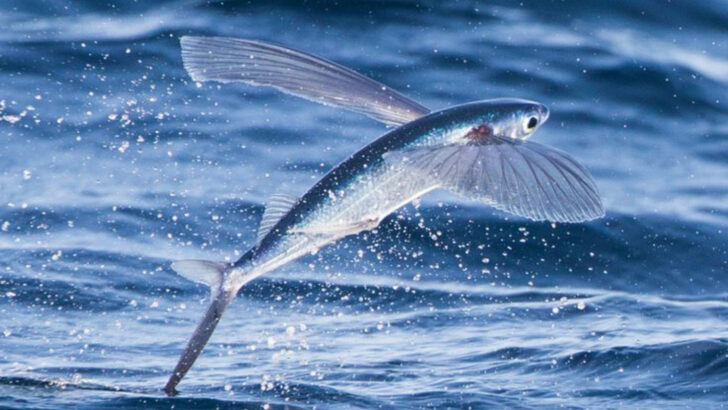Flying fish don’t just swim—they take off.
Like tiny silver torpedoes with wings, these oceanic daredevils launch themselves from the sea and soar through the air in a burst of speed and drama that looks more like a stunt than survival.
They’re not birds. They’re not bugs. They’re fish—and they glide for football field distances. No, that’s not an exaggeration.
And while most people barely notice them skimming the waves, there’s a whole world of weird, wild, and downright jaw-dropping facts packed into these slippery escape artists.
From their turbo-charged tails to the secrets behind their aerial acrobatics, flying fish have earned a spot as one of the ocean’s most surprising show-offs.
So, fasten your seatbelt—well, maybe just hold onto your beach chair—and get ready for 14 things you didn’t know about flying fish.
Aerodynamic Body Shape
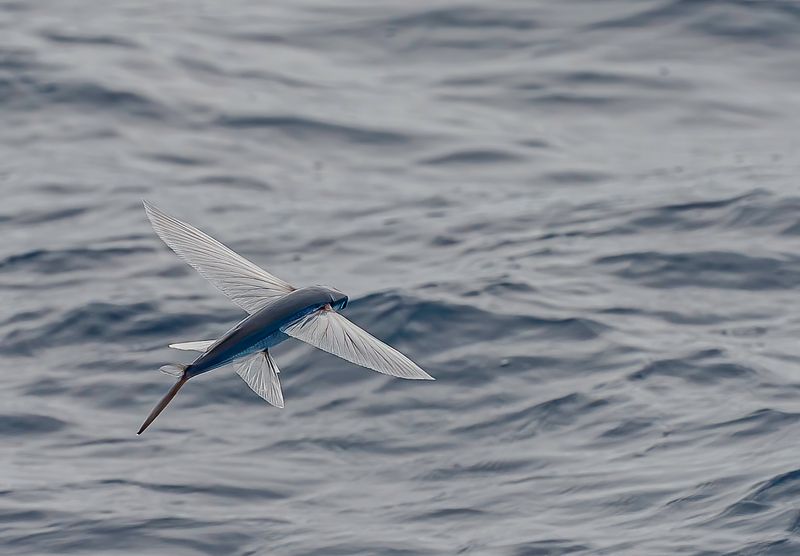
Flying fish possess a streamlined, torpedo-shaped body that assists in their gliding abilities. Their aerodynamic design minimizes resistance, allowing them to break through the water’s surface with ease.
The unique structure of their body, coupled with elongated fins, transforms them into natural gliders. One might wonder how these fish developed such an extraordinary trait.
Their body is not just about speed but also precision, helping them evade predators. This evolutionary marvel showcases the incredible adaptability of life in the ocean, making flying fish fascinating to both scientists and nature enthusiasts.
Remarkable Fins
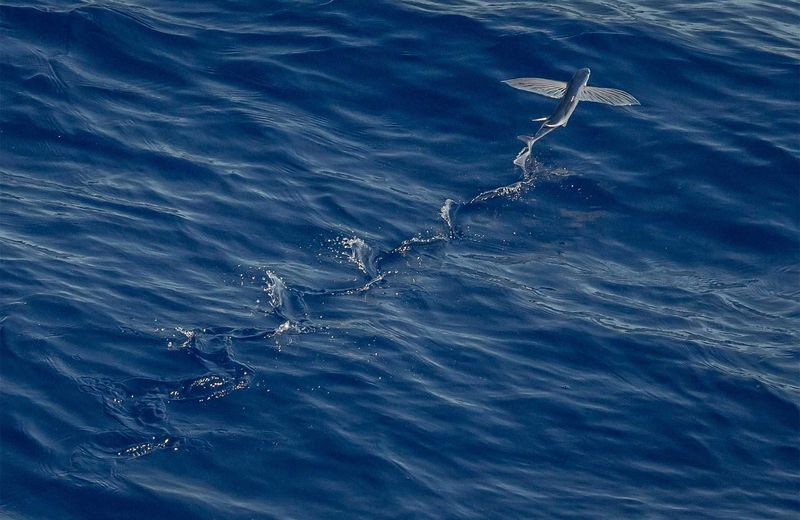
Flying fish are known for their distinctive, wing-like pectoral fins. These fins are not just for show; they are instrumental in enabling their gliding flights over the water surface. When in motion, the fins spread wide, acting like wings.
This adaptation is crucial for escaping predators. Interestingly, these fins are not just about size but also flexibility, allowing for quick movements.
This remarkable feature captures the imagination, inviting comparisons to birds in flight, highlighting nature’s innovative solutions to survival challenges.
Gliding Distances
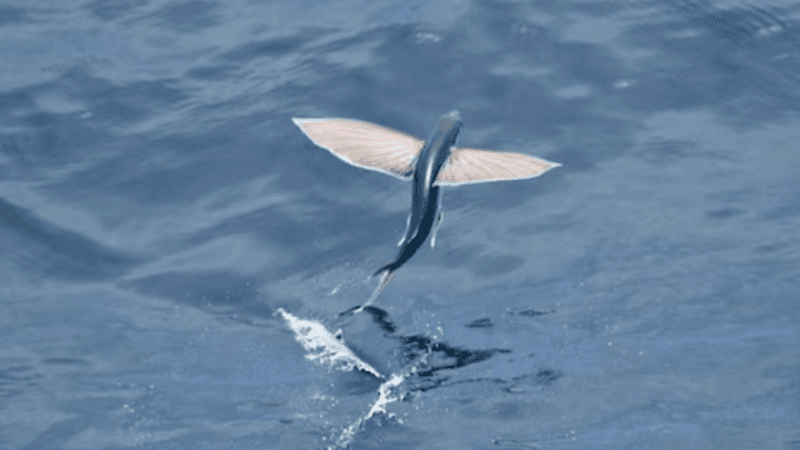
Flying fish can glide impressive distances, sometimes covering over 200 meters in a single flight. This ability allows them to escape from underwater threats efficiently.
Their powerful tail provides the initial thrust, propelling them out of the water. Once airborne, these fish glide elegantly, riding the air currents. It’s a captivating sight and a testament to their evolutionary ingenuity.
The extended gliding capability is not only a survival mechanism but also a natural spectacle that adds to the mystique of these aquatic creatures.
Diverse Species
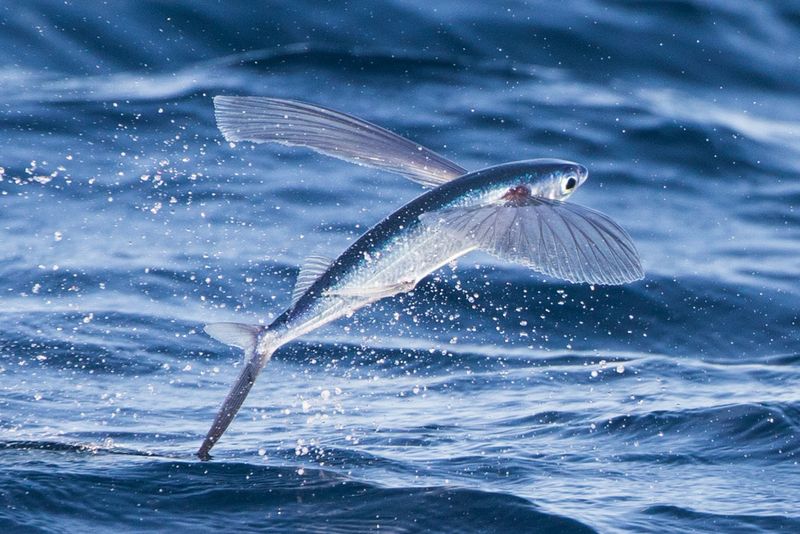
There are over 40 known species of flying fish, each exhibiting unique characteristics. These species vary in size, color, and fin shape, reflecting their adaptation to different marine environments.
The diversity among flying fish species showcases the vast array of evolutionary paths within this group. Observing these differences can be akin to exploring a vibrant tapestry of aquatic life.
Each species, with its distinct charm, contributes to the overall wonder and diversity of the ocean ecosystem.
Unique Spawning Behavior
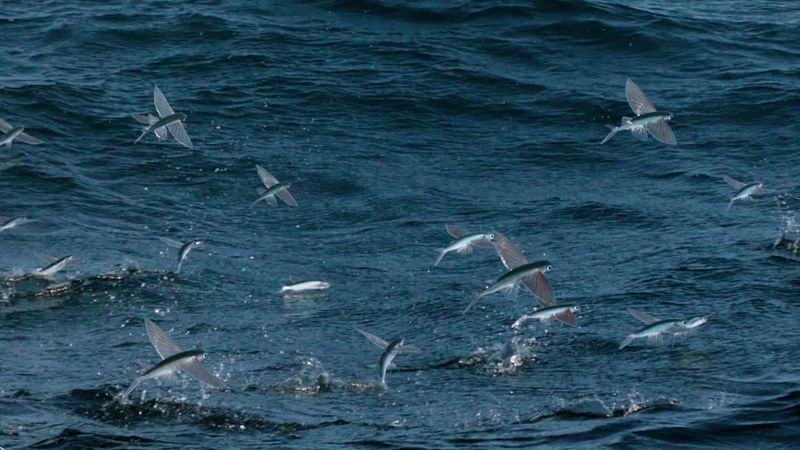
Flying fish exhibit a unique spawning behavior that involves laying eggs on floating debris. This method provides their eggs with protection and stability, increasing the chances of survival.
During the spawning season, these fish are often seen near the water’s surface, engaging in this critical life process. The choice of location for laying eggs reflects the species’ ingenious strategies for reproduction, ensuring the continuation of their lineage in the vast ocean.
Cultural Significance
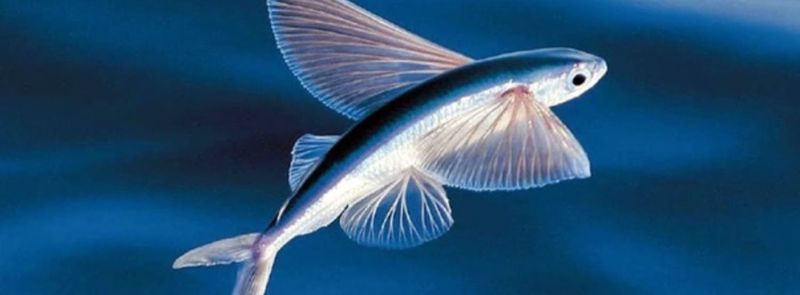
In various cultures, flying fish hold significant cultural importance and are often featured in art and folklore. Coastal communities have long revered these creatures, celebrating them through festivals and traditional dishes.
The flying fish symbolize agility and freedom, traits that resonate with many cultural narratives. The cultural ties to these fish highlight their impact beyond the ocean, influencing human traditions and culinary practices across generations.
Natural Predators
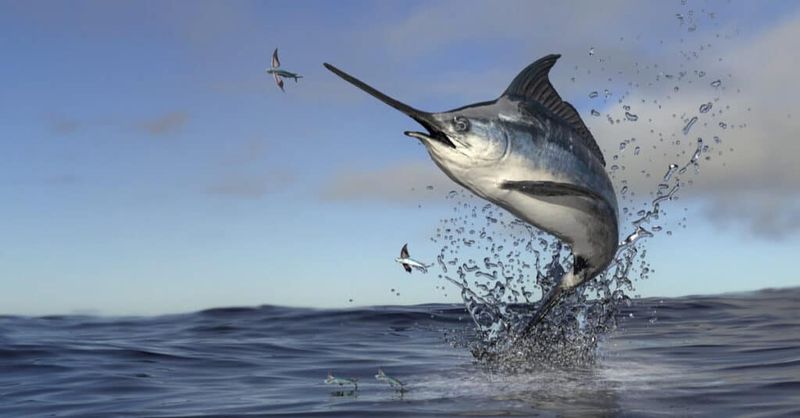
Flying fish face numerous threats from natural predators, including larger fish and seabirds. Their unique ability to glide is primarily a defense mechanism against these threats.
In the wild, the constant battle for survival shapes their behavior and adaptations. Witnessing a flying fish escape a predator’s clutches is a dramatic reminder of nature’s relentless struggle for existence, showcasing the delicate balance within marine ecosystems.
Diet and Feeding Habits
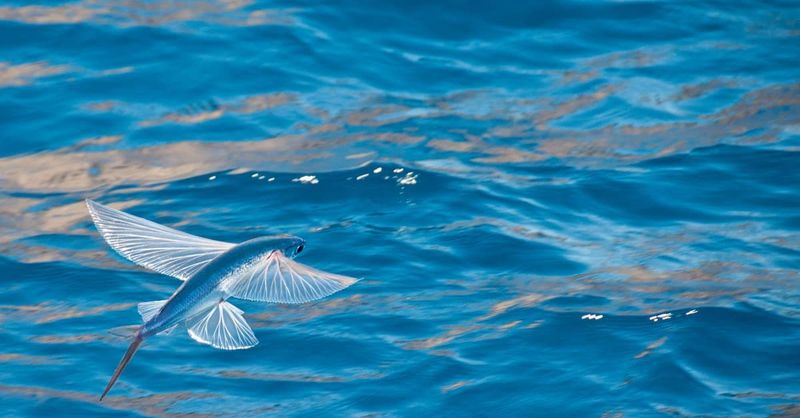
Flying fish feed primarily on plankton and small marine organisms found near the water’s surface. Their diet supports their active lifestyle, providing the necessary energy.
The feeding habits of flying fish are intriguing. By staying close to the surface, they maximize their chances of both finding food and evading predators.
This dietary choice underscores their role in the ocean’s food web, maintaining the delicate balance of marine life.
Migration Patterns
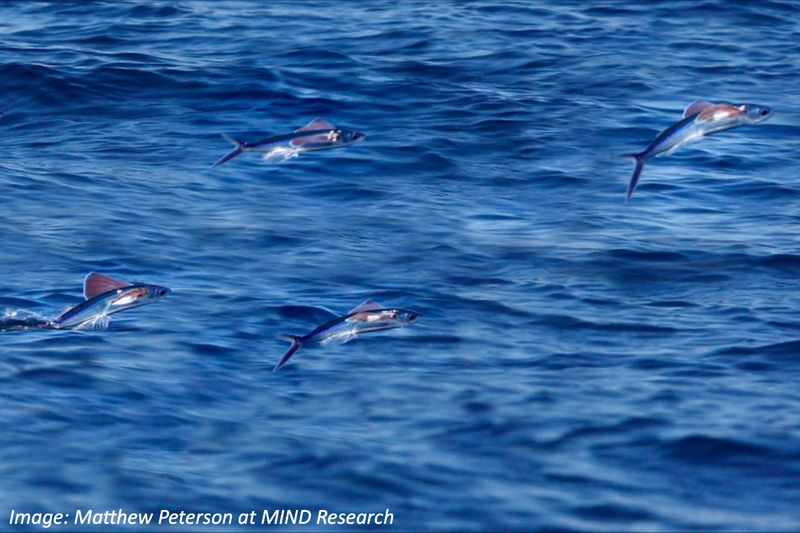
Certain species of flying fish undertake long migrations, often influenced by changes in water temperature and food availability. These journeys are critical for their survival, ensuring access to essential resources.
The migratory behavior of flying fish is a testament to their resilience and adaptability. Observing their routes offers insights into the broader patterns of oceanic life, emphasizing the interconnectedness of marine species and their environments.
Historic Discovery
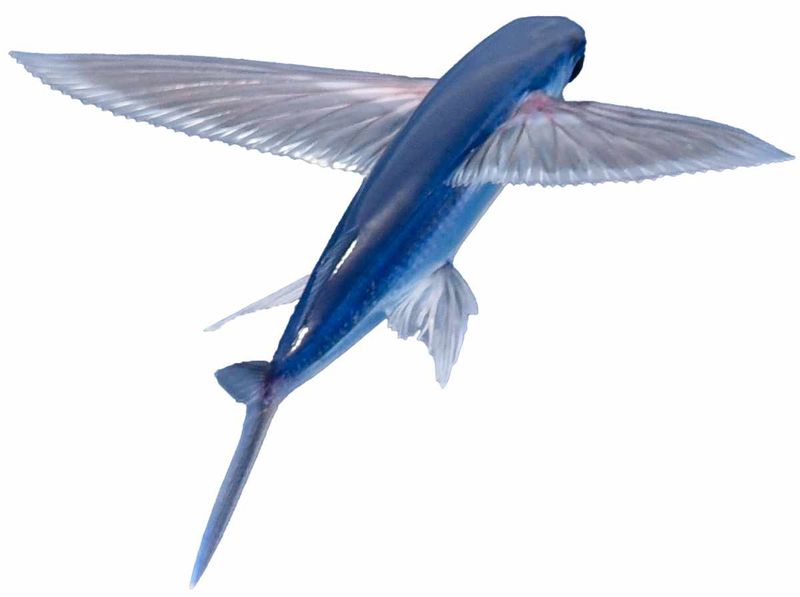
The sight of flying fish has fascinated observers for centuries. Early naturalists marveled at their ability to glide, often documenting these observations in detailed sketches.
The initial encounters with flying fish sparked curiosity and wonder, leading to further exploration of marine life. This historic fascination continues today, inspiring a sense of wonder and appreciation for the mysteries of the natural world.
Conservation Status
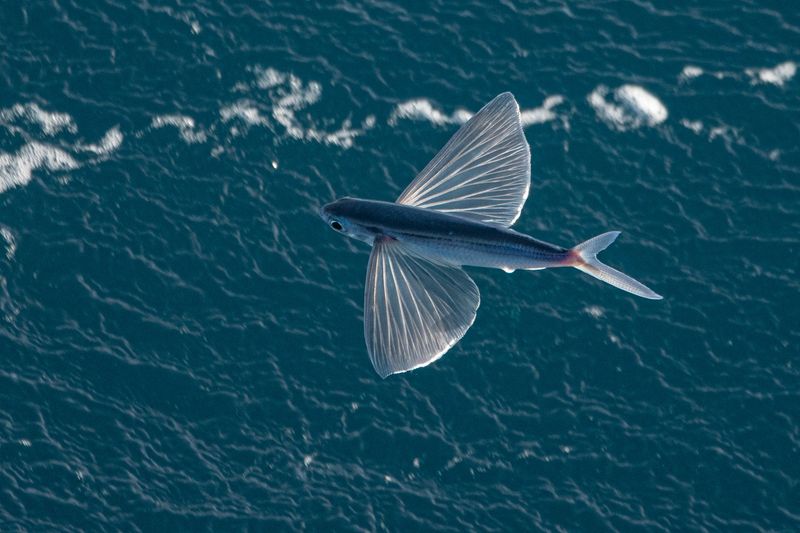
While flying fish are not currently endangered, their habitats face threats from pollution and overfishing. Conservation efforts aim to protect these environments, ensuring the survival of flying fish populations.
Understanding the challenges faced by flying fish is essential for their conservation. By safeguarding their habitats, we contribute to the preservation of marine biodiversity, highlighting the importance of responsible stewardship of our oceans.
Innovative Use of Tail
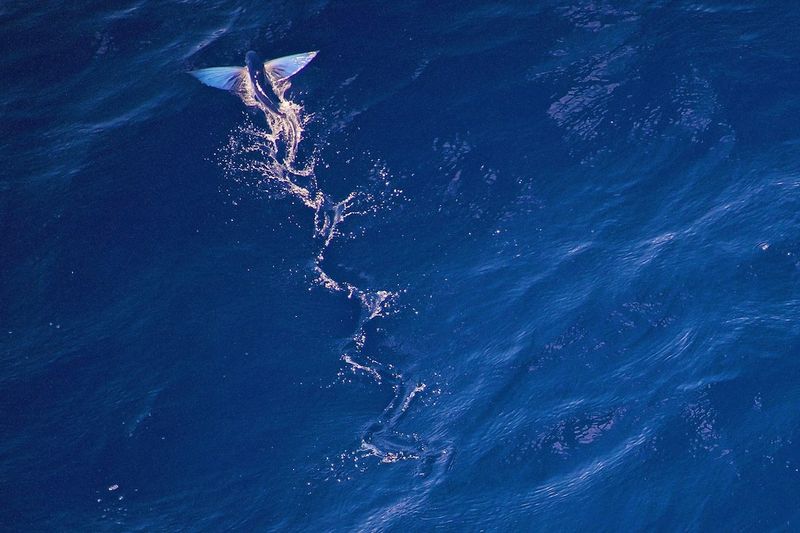
The tail of a flying fish is not only for propulsion but also plays a crucial role in their gliding ability. By beating their tail rapidly, they gain the necessary momentum to break free from the water.
This innovative use of the tail exemplifies the flying fish’s remarkable adaptations. The combination of speed and agility allows them to perform their characteristic flights, offering a glimpse into the marvels of evolutionary design.
Role in the Ecosystem
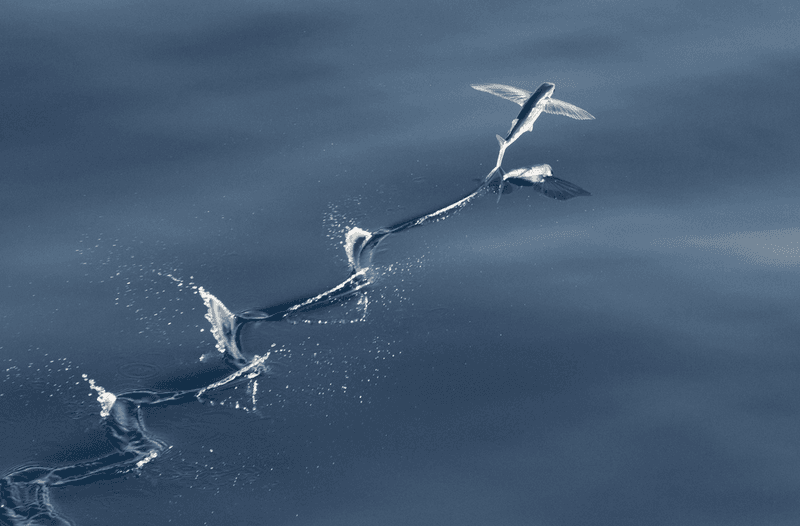
Flying fish play a vital role in their ecosystem, serving as both predator and prey. Their presence supports the balance of marine life, contributing to the health of the ocean environment.
By understanding their ecological role, we gain insights into the complex interactions that sustain marine biodiversity. Flying fish exemplify the interconnectedness of oceanic life, reminding us of the delicate balance within these vast waters.
Spectacular Night Flights
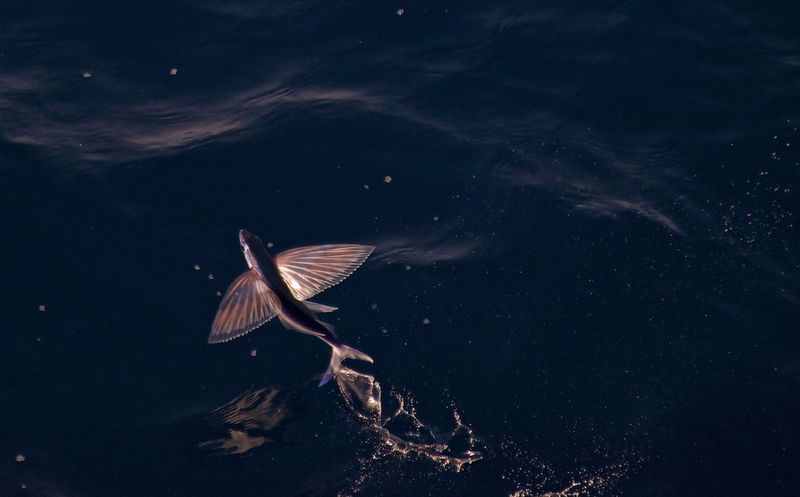
Flying fish often perform their gliding flights at night, taking advantage of the cooler temperatures and reduced predator activity. The sight of these fish gliding under a starlit sky is both magical and mesmerizing.
Night flights highlight the flying fish’s adaptability and survival strategies. The combination of moonlight and the ocean creates a scene of natural beauty, captivating those fortunate enough to witness it.

